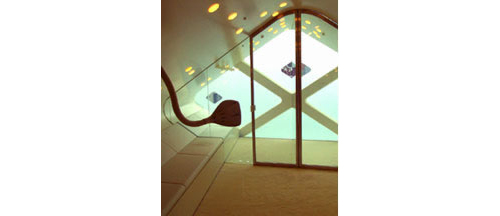Privacy Glass
Written by kris & katie on October 2, 2007. Permalink

I was in the amazing Herzog & De Meuron designed Prada store in Tokyo last year, design-gawking. The dressing room was just off to the side with the only walls made of transparent glass. I went in, and unable to easily ask for assistance, fumbled around for a bit until I saw a button on the floor, which I stepped on, causing the glass to appear to immediately fog-up. I now know, of course, that it was not fog but instead polymer liquid-crystal optics. In the natural state, liquid crystal droplets are aligned randomly in the polymer and the reflective index of liquid crystal does not match that of polymer (np ? ne), so the incident lights are scattered, resulting in a translucent state. When an electrical field is applied, the liquid crystal droplets reorient so their extraordinary relective index matches that of polymer (np = ne), resulting in a transparent state.
What are the implications for those of us who didn’t really like science class? Well, in residential applications it means that you can have rooms that transform from public to private spaces with the flick of a switch.











